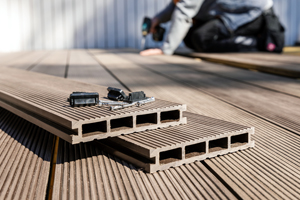Maintaining Consistent Color in High-Performance Decking
However, one of the biggest challenges in this industry has been the look of the material. When introduced, composite decking had a very “plastic” feel about it compared to traditional wood. With experience and technology, companies who produce these materials have replicated a look that better emulates natural wood, offering variants from the base-colors of grey, brown, and red. After establishing an acceptable look for the product, it is essential to maintain it throughout production, with the consistent color of the product being a key aspect of quality control. Producers of these high-quality products want board 0 to look the same as for board 100, with consumers expecting that all of the decking material be of the same color and appearance. Consistency is of paramount importance in this industry.
To maintain consistent color and appearance, the use of a properly maintained, multi-featured instrument, such as the Konica Minolta Spectrophotometer CM-26dG, can be highly beneficial. A spectrophotometer is a scientific piece of equipment that easily allows users to objectively measure, monitor, and help control the color of their products. While maintaining color is very important, so too is appearance. The CM-26dG also has a built-in gloss meter that provides true gloss measurements at 60-degrees (also known as the “universal angle”). Varying levels of finish can affect how we perceive color, and sustaining proper gloss levels will ascertain the composite materials’ overall desired appearance. This instrument allows for simultaneous measurement of both color and gloss, minimizing the risk of inconsistent readings.
Creating a process based on standards using this type of equipment allows for communicative consistency throughout the production life cycle, from development to production to consumer. These standardized values are digitized and sent to other manufacturing facilities using the same equipment allowing all locations to produce materials using the same acceptance criteria. Having the ability to maintain and control the color and gloss of composite decking material allows manufacturers to sustain quality, reduce waste and rework, and most importantly, give their customers the finished deck they have envisioned.











